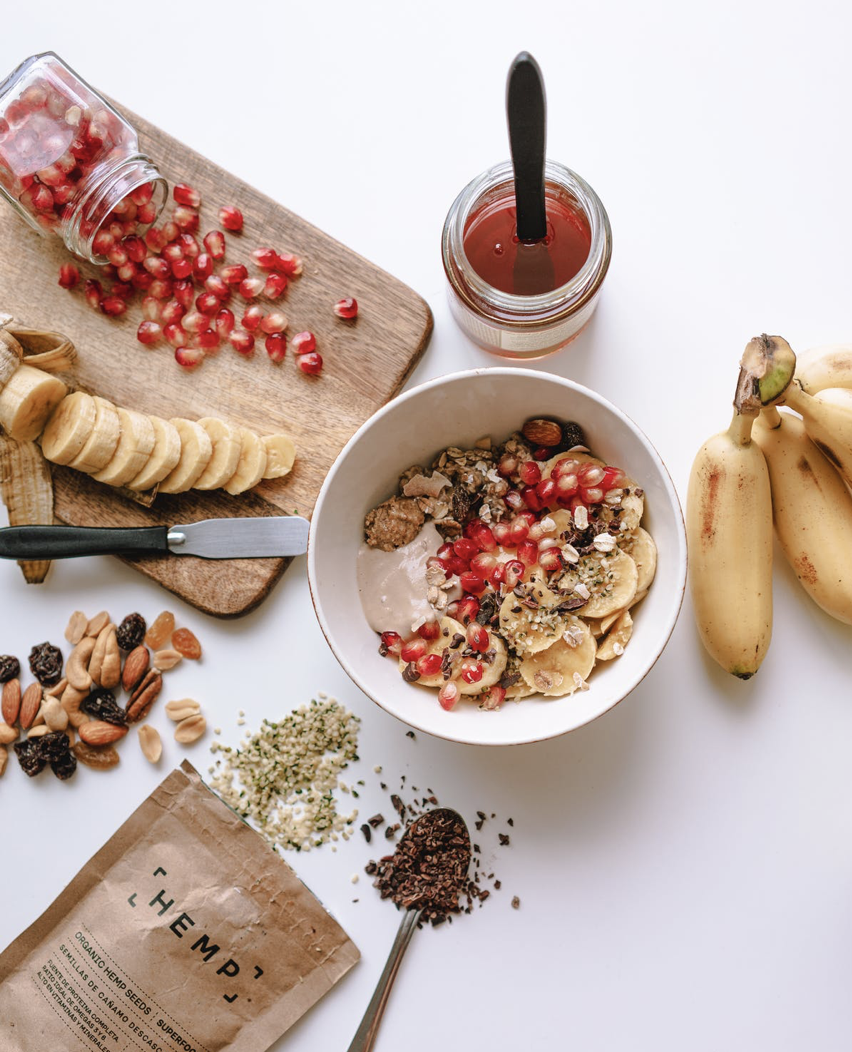How to Improve Insulin Sensitivity
To Achieve Balanced Hormones
I’m sure you’ve heard the phrases insulin resistance and insulin sensitivity, but what exactly does that mean and is it only a concern for diabetics?
In this post, we will be discussing:
What insulin resistance and insulin sensitivity mean
How it relates to balancing your hormones
Symptoms of insulin resistance
How to increase insulin sensitivity
As a dietitian, I’ve talked to my fair share of patients about blood sugar and insulin resistance, but never really thought I was at risk. I was at a healthy weight and didn’t have other risk factors. Unfortunately, the annual finger stick to check for blood sugar doesn’t give the whole picture. When I started my journey to balance my hormones, I decided I wanted to really dig into how my blood sugars and insulin sensitivity was doing and I found out that I was pre-diabetic based on my labs. It’s a terrifying feeling thinking you are doing everything right, but going off the pill had detrimental effects on my blood sugar. It’s fairly common now to have insulin resistance, because of our poor diets and sedentary lifestyles, however there are ways we can improve it and avoid a diabetes diagnosis.
So, let’s discuss how you can improve your insulin sensitivity and better yet, why you should even care!
Insulin Sensitivity vs. Insulin Resistance
Insulin is a hormone that is produced in your pancreas. Its main job is to help control blood sugar by “unlocking” your cells to let glucose inside to be used for energy. The issue comes when our blood sugars are chronically high and your cells become resistant or desensitized to insulin. This means that glucose isn’t being let into the cells and is instead staying in your blood stream where it can cause damage to other parts of your body. If you have insulin resistance, you have low insulin sensitivity. Essentially, our goal is to avoid insulin resistance and increase insulin sensitivity. If left untreated, insulin resistance can lead to diabetes, but it is possible to improve your insulin sensitivity before that point.
Insulin Resistance & Hormonal Imbalances
Your body tries extremely hard to keep blood sugar in check, as it can lead to a laundry list of issues due to inflammation. Unfortunately, our current diet and food system is setting us up for failure with the overall poor quality of food. Insulin resistance can lead to higher levels of testosterone, which causes estrogen to be out of balance. It also causes spikes in cortisol, which is your stress hormone that the body will prioritize above all other hormones. This is why even if you’re doing everything else correctly to undo imbalances, if your blood sugar is out of whack, you won’t get very far in healing.
Lastly, a risk factor of diabetes and insulin resistance is obesity. Your fat cells actually excrete estrogen, which can cause estrogen dominance in the body. Just one more example of one hormonal imbalance causing others to go astray!
Symptoms of Insulin Resistance
Risk factors of developing insulin resistance include: obesity, lack of physical activity, high blood pressure, sleep apnea, and cardiovascular disease. Symptoms of insulin resistance include:
Extreme hunger or thirst (even after a meal)
Increased urination
Tingling sensations in hands or feet
Feeling more fatigued
Frequent Infections
More skin tags or changes in skin pigmentation (particularly on armpits or around your neck)
How to Increase Insulin Sensitivity
Exercise!
Exercise utilizes the glucose in your blood for energy, which can bring blood sugar levels down and has also been shown to improve insulin sensitivity. It is recommended to aim for 30 minutes of moderate exercise, 5 days a week. If you’ve never been able to consistently workout, start with 10 minutes a day and work up from there. It’s also important to find something you enjoy doing, so you’re more likely to stick with it. You don’t have to do HIIT to get a workout in (in fact I don’t recommend it for hormonal imbalances, as it can cause stress and cortisol spikes). Start walking more, parking farther away from the store, taking the stairs instead of the escalator, implement family walks in the evenings, etc.
Quality Sleep
I’ve said it before and I’ll say it again: Quality sleep is essential for good health. When it comes to insulin sensitivity, studies have shown that even improving sleep by an hour can help to increase insulin sensitivity. Aim for 7-9 hours a night. If you find that you frequently wake up in between the hours of 2-4 AM, this can actually be a symptom that your body has blood sugar imbalances. Try keeping a snack by your bedside if you wake up in the middle of the night. Some good options include peanut butter crackers, almonds and dried cranberries, or grab some cheese from the fridge. Another option is to eat a snack right before bed, just make sure it is a good balance of carbohydrates, protein, and fat.
Increase Fiber Intake
Fiber is a type of carbohydrate that is unable to be broken down fully by the body. Because of this, it doesn’t actually raise blood sugar levels. It can slow gastric emptying (how long it takes for your stomach to empty its contents into the small intestine), which can also help slow digestion of carbohydrates. This may contribute to helping to bring down your blood sugar and decrease insulin resistance. Aim for 25 g per day by eating fruits and vegetables, coconut meat, dark chocolate, soaked/sprouted beans/seeds/legumes.
Scheduled & Well-Rounded Meal’s
The timing of your meals is important. Typically I am a huge proponent of listening to your body for hunger cues, however when balancing your blood sugar for hormonal imbalances, it is essential to keep that blood sugar as steady as possible. To keep blood sugar levels steady, be sure to eat every 4-5 hours and never skip a meal (including breakfast!). If you find you are never hungry in the morning when you wake up, that is a sign that your liver has been burning through its glycogen reserves. Start eating breakfast in the morning within an hour of waking up and a snack before bed.
Next, making sure you have a balanced plate. Focusing on getting carbohydrates, fats, and protein in at every meal and snack can help your body slow down the digestion of carbohydrate and help stagger the amount of insulin your body needs at one time. Don’t know what to eat? I have a 30 day menu plan for my students in my course, sign up here to be notified.
Shop the Perimeter:
It’s no secret that the aisles filled with processed food in the grocery stores aren’t doing us any favors. Cut back on the chips, cookies, candy, and crap and start incorporating more whole foods: fruits, vegetables, grass fed meat, pasture-raised eggs, cultured dairy, etc. Your body will thank you for it!
Test Don’t Guess
Get your fasting blood sugars taken and your HbA1C to get a baseline of where you are at. Or measure
Fasting:
Normal: 80-100 mg/dL
Pre-diabetes: 100-125 mg/dL
Diabetes: >125 mg/dL
HbA1C:
Normal: <4.0-5.6%
Pre-Diabetes: 5.7-6.4%
Diabetes: >6.5%
I know it can be a scary topic. It was such a wake up call for me seeing that pre-diabetes range. Luckily, I was able to lower my blood sugar levels and improve my insulin sensitivity through the tips provided in this post and you can too! I can’t wait for you to see how your life changes with just a few lifestyle changes.
If you have recently come off birth control or suspect you might have hormonal imbalances, take the free assessment below! Blood sugar is just one pillar in setting yourself for hormonal bliss and I want to help you get there.






